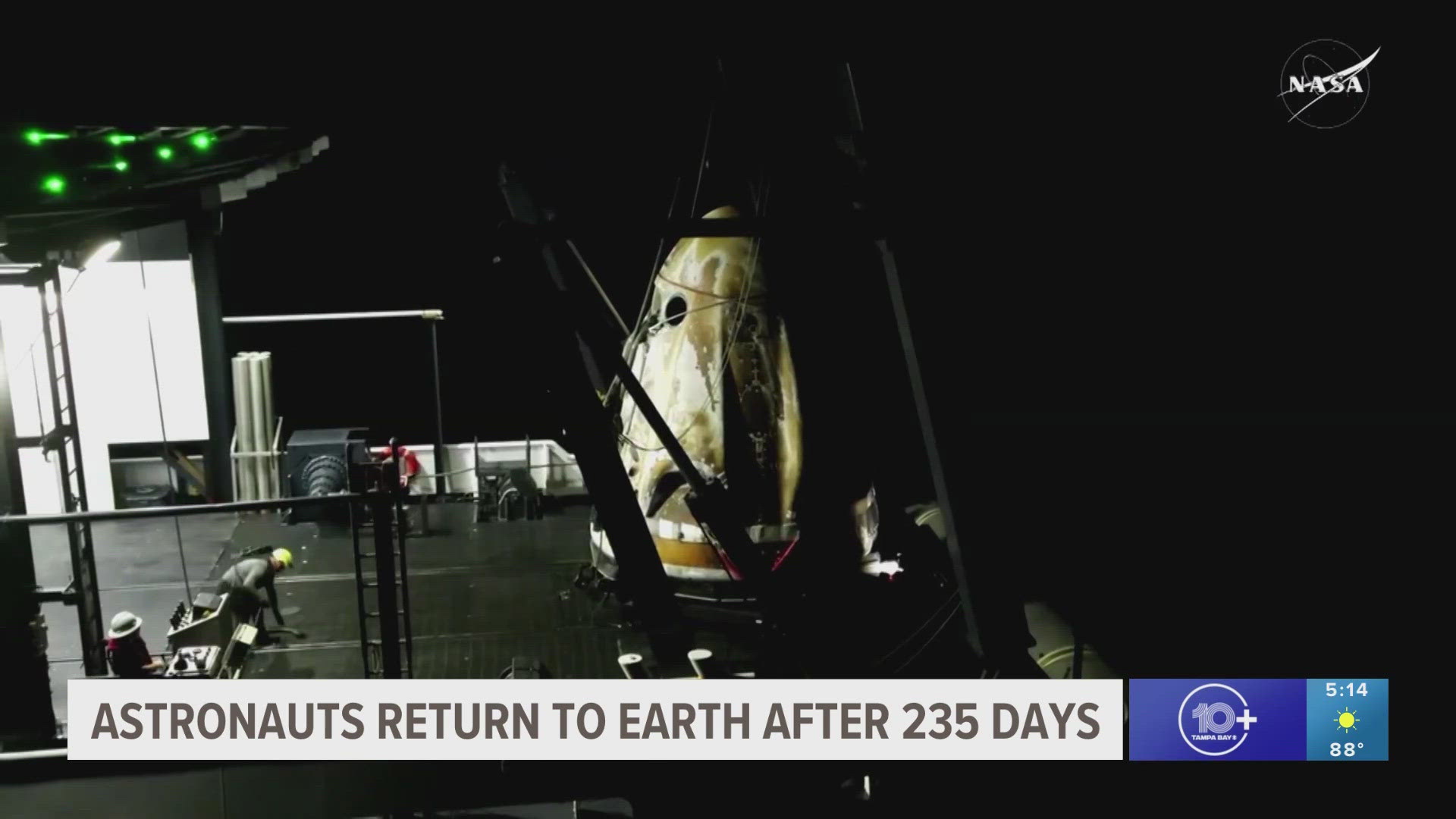ST. PETERSBURG, Fla. — "Potholes" are causing out-of-this-world problems for satellites in space.
NASA scientists are tracking the impact of a "dent" in Earth's magnetic field. It's growing and splitting into two lobes over South America and the southern Atlantic Ocean.
In a release Monday, NASA says the South Atlantic Anomaly (SAA) is an "unusually weak spot in the [magnetic] field." We won't see much of an impact down here on Earth, but in space -- it's a different story.
"Earth’s magnetic field acts like a protective shield around the planet, repelling and trapping charged particles from the Sun," NASA says in its report, adding the SAA "allows these particles to dip closer to the surface than normal."


Scientists say when those particles get too close, the radiation they fling out can interfere with computers and other data collection software onboard satellites in space. They compare it to being rattled on the road when you hit a pothole.
The International Space Station also passes through the SAA. The astronauts on board are safe, but the instruments they use to collect information in space could be temporarily or even permanently damaged by a radiation hit from these "potholes."
RELATED: NASA astronauts set out on spacewalk to replace aging International Space Station batteries
NASA scientists say the SAA is caused by the flow of molten metals and the tilt of the magnetic axis at Earth's core. They hope studying the anomaly will help them understand how our planet is changing. Scientists also want to create stronger tools and instruments that can survive these blips of radiation in space.
The Union of Concerned Scientists says there are more than 2,600 satellites orbiting Earth. Half of them are owned and operated by the United States and we're frequently adding more.
This week, SpaceX marked it's 100th Falcon 9 launch to send Starlink satellites into space. They'll be used by inventor Elon Musk to create a global high-speed internet network. He's the same man behind the recent Crew Dragon mission that saw the first launch of astronauts from U.S. soil since 2011, and the first water landing in nearly 50 years.
Many satellite launches out of the U.S. happen along our own space coast in Cape Canaveral. See when the next rocket is launching from Kennedy Space Center here.



